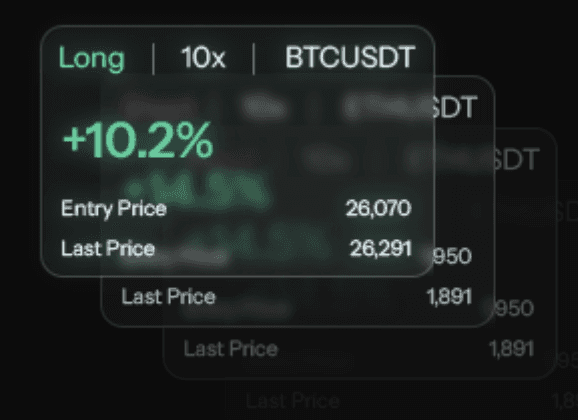What Is a Liquidity Gap?
Aug 15, 2023
Liquid assets are assets that are easily and simply converted to cash. Liquidity enables efficient price discovery and minimizes the impact of large trades on the market. When aiming to capitalize on short-term price movements, liquidity comes extremely handy. Despite its rosy pictures, be aware of liquidity grabs and other market liquidity risks. In most cases, the more liquid an asset is, the less its value will increase over time.
The Liquidity Gap
In short, liquidity gap is the difference of an entity’s total liquid assets and total liabilities.
Lack of Players: There is an insufficient number of investors to take the opposite side of a trade, and people who are looking to sell their securities are unable to do so.
Lack of Cash on Hand: The amount of liquid assets held is very minima
Market Crash: There aren’t parties that were willing to take the other side of the trade and purchase at depressed prices. The whole market is down.
A negative gap indicates the entity is netting less income than the amount of liabilities assumed. When positive, the entity has liquid assets left over after all of the liabilities have been fulfilled. Do note that there are several varied scenarios in which a liquidity gap can occur. The above is very much a large generalization of most of the scenarios.
Making Use of the Gap
You have definitely heard about liquidity trading or gap trading. Here, gaps represent significant imbalances of supply and demand. They are essentially areas on a price chart where the market has “skipped” position. In other words, gaps represent instances where market prices have moved sharply (downward or upward) and created an empty space on the chart history of an asset.
Gap trading an approach to buying and shorting stocks. You find stocks that have a price gap from the previous close, then watch the first hour of trading to identify the trading range. Rising above that range signals a buy, while falling below it signals a short. We will be discussion in-depth on gap trading shortly in the future.
Conclusion
There are several ways in which we can use liquidity to maximize profits. Liquid assets are very important is also a key part of sound long-term financial planning. As a trader, you should always hold some liquid assets quickly get cash when you need it most. Stay safe and happy trading!

What Is a Liquidity Gap?
Aug 15, 2023
Liquid assets are assets that are easily and simply converted to cash. Liquidity enables efficient price discovery and minimizes the impact of large trades on the market. When aiming to capitalize on short-term price movements, liquidity comes extremely handy. Despite its rosy pictures, be aware of liquidity grabs and other market liquidity risks. In most cases, the more liquid an asset is, the less its value will increase over time.
The Liquidity Gap
In short, liquidity gap is the difference of an entity’s total liquid assets and total liabilities.
Lack of Players: There is an insufficient number of investors to take the opposite side of a trade, and people who are looking to sell their securities are unable to do so.
Lack of Cash on Hand: The amount of liquid assets held is very minima
Market Crash: There aren’t parties that were willing to take the other side of the trade and purchase at depressed prices. The whole market is down.
A negative gap indicates the entity is netting less income than the amount of liabilities assumed. When positive, the entity has liquid assets left over after all of the liabilities have been fulfilled. Do note that there are several varied scenarios in which a liquidity gap can occur. The above is very much a large generalization of most of the scenarios.
Making Use of the Gap
You have definitely heard about liquidity trading or gap trading. Here, gaps represent significant imbalances of supply and demand. They are essentially areas on a price chart where the market has “skipped” position. In other words, gaps represent instances where market prices have moved sharply (downward or upward) and created an empty space on the chart history of an asset.
Gap trading an approach to buying and shorting stocks. You find stocks that have a price gap from the previous close, then watch the first hour of trading to identify the trading range. Rising above that range signals a buy, while falling below it signals a short. We will be discussion in-depth on gap trading shortly in the future.
Conclusion
There are several ways in which we can use liquidity to maximize profits. Liquid assets are very important is also a key part of sound long-term financial planning. As a trader, you should always hold some liquid assets quickly get cash when you need it most. Stay safe and happy trading!

What Is a Liquidity Gap?
Aug 15, 2023
Liquid assets are assets that are easily and simply converted to cash. Liquidity enables efficient price discovery and minimizes the impact of large trades on the market. When aiming to capitalize on short-term price movements, liquidity comes extremely handy. Despite its rosy pictures, be aware of liquidity grabs and other market liquidity risks. In most cases, the more liquid an asset is, the less its value will increase over time.
The Liquidity Gap
In short, liquidity gap is the difference of an entity’s total liquid assets and total liabilities.
Lack of Players: There is an insufficient number of investors to take the opposite side of a trade, and people who are looking to sell their securities are unable to do so.
Lack of Cash on Hand: The amount of liquid assets held is very minima
Market Crash: There aren’t parties that were willing to take the other side of the trade and purchase at depressed prices. The whole market is down.
A negative gap indicates the entity is netting less income than the amount of liabilities assumed. When positive, the entity has liquid assets left over after all of the liabilities have been fulfilled. Do note that there are several varied scenarios in which a liquidity gap can occur. The above is very much a large generalization of most of the scenarios.
Making Use of the Gap
You have definitely heard about liquidity trading or gap trading. Here, gaps represent significant imbalances of supply and demand. They are essentially areas on a price chart where the market has “skipped” position. In other words, gaps represent instances where market prices have moved sharply (downward or upward) and created an empty space on the chart history of an asset.
Gap trading an approach to buying and shorting stocks. You find stocks that have a price gap from the previous close, then watch the first hour of trading to identify the trading range. Rising above that range signals a buy, while falling below it signals a short. We will be discussion in-depth on gap trading shortly in the future.
Conclusion
There are several ways in which we can use liquidity to maximize profits. Liquid assets are very important is also a key part of sound long-term financial planning. As a trader, you should always hold some liquid assets quickly get cash when you need it most. Stay safe and happy trading!

Supercharge your trading game with Market Mapper today!




